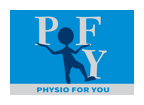LATERAL EPICONDYLAGIA (TENNIS ELBOW)
Lateral Epicondylalgia refers to pain experienced on the outside of the elbow, which can also travel down the forearm towards the wrist. This condition presents gradually as pain arising from the top of the forearm and/or the outside of the elbow. This is where our main gripping muscles originate from and attach to the bone…



